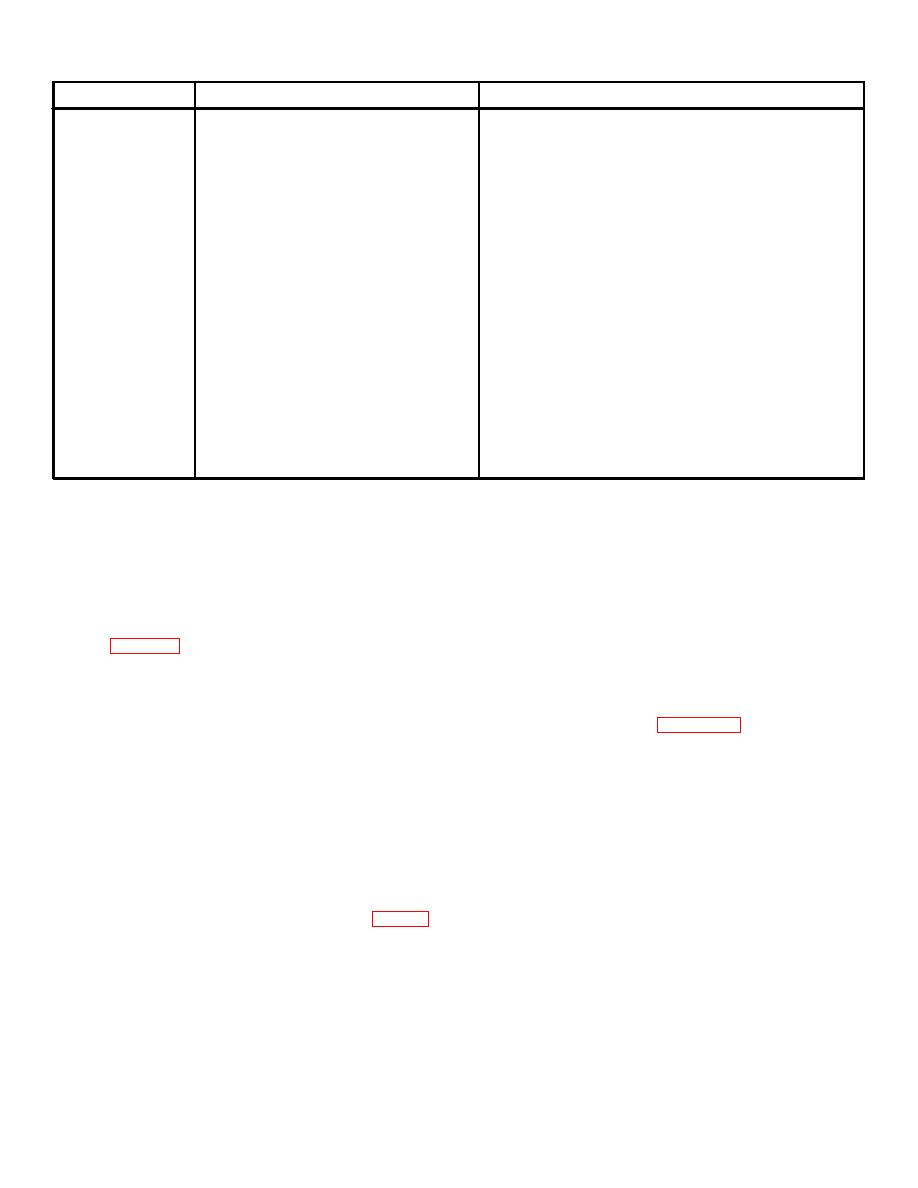 |
|||
|
|
|||
|
|
|||
| ||||||||||
|
|  TM 11-5820-509-35
Section
Action required
Reference standard
5.
Record output of 560 - 750-kHz filter.
5.
At A7J4, from 575- to 725-kHz, 0.6 to 1.0 volt pep; at 650 and
775 kHz, 0.7 volts p-p. maximum, and at 500 and 800 kHz,
0.2 volts pep maximum.
6.
(a) At A7J5, not less than 4.0 volts dc from 650 to 700
6.
Record frequency discriminator operation.
kHz; A7J6 not more than 1.5 volts for same
frequencies. At A7J5, not more than 1.6 volts dc
from 700 to 750 kHz; A7J6 not less than 4.0 volts for
same frequencies.
(b) At A7J5, not less than 4.0 volts dc from 600 to 650
kHz; A7J6 not more than 1.5 volts for same
frequencies. At A7J5, not more than 1.5 volts dc
from 660 to 700 kHz; A7J6 not less than 4.0 volts for
same frequencies.
(c) At A7J5, not less than 4.0 volts dc from 560 to 600
kHz; A7J6 not more than 1.5 volts for same
frequencies. At A7J5, not more than 1.5 volts dc
from 600 to 650 kHz; A7J6 not less than 4.0 volts for
7.
Adjust error voltages.
same frequencies.
7.
Select R144 to provide balanced 10 kHz modulation levels at
8.
Verify
successful
antilock
circuit
the output circuits of Q9 and Q12.
operation.
8.
ANTI-LOCK lamp operates satisfactory and A7J4reads 1.05
volts pep.
9.
Record SMO mixer output.
9.
At A7J4, 1.5 0.4 volts pep throughout tuning range of
equipment.
Section II. PERFORMANCE TESTS
6-9. General
CAUTION
This section contains the tests and performance data
Before
connecting
the
power
required to determine whether the repaired equipment
supplies to the test fixture, set their
meets
the
original
performance
requirements
output voltages to 24.0 2.0 volts
established for Radio Set AN/PRC-47.
and -7.0 0.5 volts respectively.
6-10. Audio Frequency Amplifier AM-3506/PRC-47 (A8A1)
Then return the power on-off switch
to off until instructed to apply
a. Test Equipment and Material.
primary power to them.
(1) Audio Oscillator TS-382/U
(1) Connect the audio oscillator, frequency
(2) Distortion Analyzer TS-723/U
counter, output meter and the two power supplies to the
test fixture as shown in figure 6-11. (The connections
(3) Frequency Counter AN/URM-79/U
for the remaining test equipment are detailed in the
(4) Loudspeaker LS-166/U (or Headset H233)
appropriate procedural steps below.
from AN /PRC -47
(2) Remove the dust cover from the module,
(5) Multimeter ME-26A/U
set all potentiometers to mid-range ill turns from either
(6) Oscilloscope AN/USM-50
end), and carefully insert the module into connector J1
(7) Output Meter TS-585/U
on the test fixture.
(8) Power Supply (24 volts dc!, Harrison
(3) Apply primary power to all test equipment
6202B, or equal
and turn on the power control switch of each unit.
(9) Power Supply (-7 volts dc), Harrison
Immediately adjust the output of the 24 volts power
6203B or equal
supply to 24.0 0.5 volts dc and then place the POWER
(10) Test fixture for AM-3506/PRC-47 (fig. 6-4)
switch of the test fixture to ON.
(11) Voltmeter ME-30A/U
(4) Place the +20 V - +24 V switch to the +20
b. Test Conditions and Equipment Connections.
V position and observe that the MODULE CURRENT
meter reads approximately 25 ma. Place the switch to
+24 V and note the MODULE CURRENT indication is
approximately 55 ma.
6-13
|
|
Privacy Statement - Press Release - Copyright Information. - Contact Us |